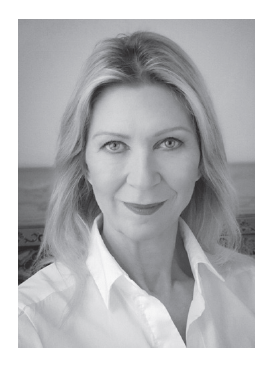Portfolio Confidential

 Here are three real world confidential portfolio discussions.
Here are three real world confidential portfolio discussions.
Q: I am retired (61) and someone pitched me to change strategies. They said I needed to “pensionize” my nest egg by having my portfolio mirror a typical pension fund’s investments and include alternative investments not correlated with the public equity and bond markets. They said pension funds are typically less affected by market swings as much as individually held retirement portfolios and that traditional fixed income securities are getting beat up as interest rates have decreased dramatically. As rates will likely remain very low for a long time they said this would increase the likelihood that I could “run out of money”. I see risk in these alternatives as well as a lack of transparency and they charge a robust fee to manage them too. How appropriate is this asset class for retirees?
A: I would argue that your odds of running out of money depend more on your spending rate versus portfolio size than the prevailing level of interest rates! Retirees can be vulnerable to scare tactics such as sales pitches that use phrases like “running out of money” and this is a red flag. That said, this low yield environment is real and the question as to whether alternative assets are appropriate for retirees is a good one.
This Financial Times article frames today’s dilemma: “A universe where bonds provide little to no interest fails in providing a fixed income beyond the current rate of inflation. It also limits the prospect of capital appreciation for portfolios. And that’s the good news. Far more daunting is the likelihood that investment in government and other high-quality bonds over time registers negative returns once the global economy negotiates the pandemic. Sure, central banks will try to limit a sharp rise in yields on bonds, but a potentially more inflationary future explains why many current investment strategists favour a greater shift towards owning equities, commodities and alternative assets such as infrastructure.”
In other words, alternative investment classes look like an unusually good idea right about now! I would recommend starting slowly and building up to no more than 20% of your overall portfolio. The trick is to figure out which alternative classes! This will require due diligence so seek out product offerings that align with your personal interests. In doing my own research I found offerings that sounded interesting to me: Ninepoint Global Real Estate Fund, Bridging Mid-Market Debt Fund, and the OurCrowd Pandemic Innovation Fund which invests in companies combating current and future pandemics. I am not endorsing any of these, I’m just providing some ideas as to what’s available.
I am seeing a slew of new funds designed to meet this growing demand for “pension fund-like returns”, but institutional managers often require a $5-10 million minimum investment. Some firms such as Northfront Financial Inc in Calgary, have created a pooled fund of alternative assets managed by institutional managers with the same mandates used by pension funds in areas such as real estate, private equity, infrastructure and private debt, but with lower minimums. This fund has only been up and running for two years although the underlying institutional managers have longer track records.
It is still early days for most funds in this category and I’ve heard about many subpar alternative investments. Pension funds have a longer time horizon than the average retiree, plan to hold these alternative investments for many years, and have very different liquidity requirements. Retail investors need to take a close look at fees, transparency, liquidity and track record. Doing your own research may sound onerous but it is necessary. As reasoned a case as it is to hold alternative asset classes, it is not so easy to find the ones that are most likely to demonstrate their prowess in the coming years.
Another alternative for retirees? Stick to boring old GICs for your fixed income allocation and lower your return expectations.
A: Do you think it is important to discuss finances with your partner early on? How do I broach the topic? It seems so unromantic.
A: Respect for each other is key in all relationships and particularly when it comes to money issues and respectful open communication matters enormously. I would acknowledge upfront that discussing finances can be strange. Start by making it a broader, more interesting conversation. Maybe discuss how each of your parents talked (or not) about money when you were growing up. Ask each other how you think money should be talked about. And then how each of you think money should be managed in a relationship. Ask your partner: “What would be most comfortable for you?”
Q: What about a relationship where the women earns a little more than the man? How can she approach this conversation?
A: The key thing here is to focus the conversation around the concept that financial situations can and probably will change over time. From there, acknowledge the facts: this is what my salary is today and here is what my financial situation is today. But…this could go up or down over the next forty years.
My husband and I have been together 16 years and our incomes are quite similar…on average. But in the years where my income has been higher I make it a fun thing and I’ll do something like tell him that I’ve bought us flights and hotel for a long weekend in New Orleans and he has to come with me! He seldom objects. In years when his income is higher than mine, he will take me on trips, or even do less fun stuff like pay for appliance repairs.
Q: When moving in together as a couple there are issues around who pays for what as part of the monthly household budget: groceries, necessities, mortgage, etc. What do you feel is the best approach for dealing with this?
The two most common strategies I have come across are: 1) Some couples operate based on the principle that proportionate income = proportionate share of expenses or 2) Other couples put the same amount in the combined pot for household expenses but anything extra is personal spending – no questions asked.
I really like this last “allow for the urge to splurge” approach. One couple I know told me that when they started dating 30 years ago, they recognized that they were both spenders…sometimes on each other and sometimes on themselves. They had one concern when they decided to move in together: neither wanted to have to ‘get permission’ from their partner to spend on the things that were important to them. They arrived at a solution that has worked well throughout their entire married life. Each of them has a fully discretionary spending amount per month ($800 currently but this varies according to their incomes and the inflation rate.) If the husband feels stressed out and needs three massages at The Four Seasons hotel? No judgement. If the wife wants to treat her best friend to a lavish dinner out? No discussion required.
The bottom line with this scenario is that both partners need to feel comfortable with whichever approach is decided on. It is critical to acknowledge and respect individual goals and objectives— within the couple context. And… If at first you don’t succeed, try try again.
Do you have questions about your own investment portfolio? I have recently set up The Rich Thinking® Financial Advice Hotline. This will be a win/win: you get a free 30-minute confidential Zoom chat offering an independent, unbiased perspective on your financial situation with no sales pitch! In exchange, I get to use the anonymized data that will come from these conversations to make my Rich Thinking research even better. Email me to book your Zoom discussion: barbara@barbarastewart.ca.

